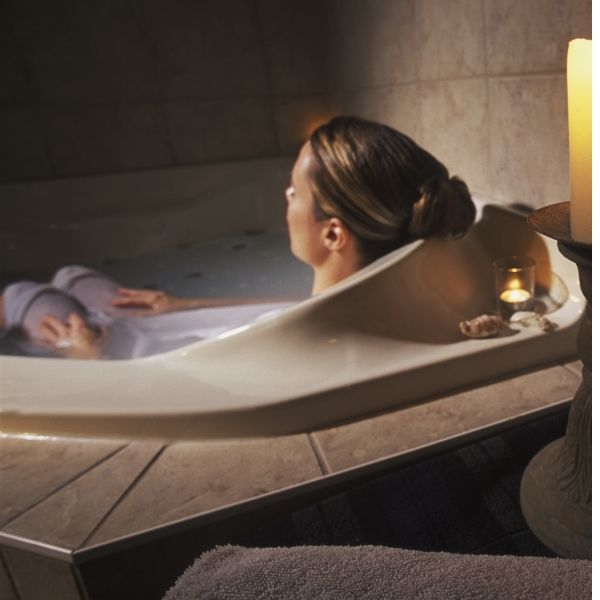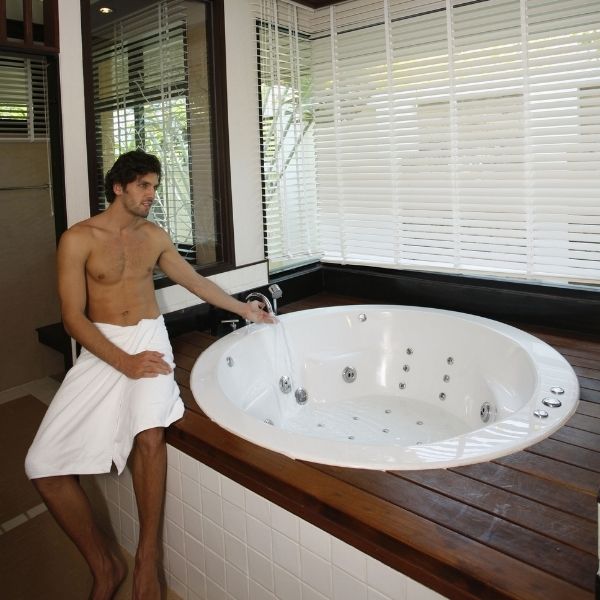This post will discuss the benefits of a hot tub after a workout and how it can help you perform better and become fitter.
You probably already know that regular exercise can help reduce stress and increase energy levels. But did you know that a hot tub provides other health benefits? And, even more important, it will help you recover from a workout faster.
The benefits of a hot tub after a workout are pretty obvious. You can relax your tired muscles, reduce the pain in your joints and even sleep better. But the benefits of a hot tub after a workout go beyond that. It's not just about having a relaxing time after you exercise; it is also about improving your health and fitness.
A Hot Tub's Effects on Muscle Recovery
There's an interesting study on the effects of post-workout hot tubs on muscle recovery, and the results are pretty astonishing. A study published in the journal Strength and Conditioning Research reports using a hot tub after a workout prevents injury-induced elastic tissue damage.
Researchers found lower myoglobin levels in the blood of people who exercised and then took a hot tub post-workout than those who did not take a hot tub. This suggests less muscle tissue damage for people who used hot tubs post-workout.


However, timing is key as it showed better results when they allowed their muscles to cool off and their heart rate dropped back to normal before soaking in a hot tub. They achieved the best results by applying ice packs or cold water to aching muscles for 10 to 20 minutes, followed by 10 to 20 minutes of soaking in hot tubs.
It's no surprise why so many gyms and recreation centers have hot tubs in their facilities. Aside from its relaxing effect, hydrotherapy is also a great way to prevent or reduce joint and muscle pain and speed up workout recovery.
Other interesting benefits of post-workout hot tub found in the study include enhanced ability to cool their bodies by sweating much sooner, increased volume of blood plasma (an indication of a strong heart), improved stamina, and better athletic performance.
Key Takeaways: Hot tubs speed up recovery by increasing blood flow and relieving tension and muscle soreness.
Hot Tubs vs. Cold Water Therapies: Which is Better?
Most people associate inflammation with muscle soreness. They're actually two different things, so we don't treat them the same. Cold temperatures are great at reducing inflammation and taking away some pain. But when it comes to muscle soreness resulting from intense physical activity, you need a different approach.
Workout-induced soreness is actually a good sign. It means your body is actively involved in repairing worn-out muscle tissues. By soaking in a hot tub, you're helping the body recover faster. Here's why.


Soaking in a hot tub causes your blood vessels to dilate, enhancing blood circulation while the warm temperature relaxes your muscles and relieves tension. Cold baths do the exact opposite, and they may actually slow down your recovery.
There's no doubt the benefits of hot tubs post-workout, but what about doing them before your workouts? Surprisingly, taking a short dip before a workout gives the same benefit as post-workouts. That's because soaking in hot tubs warms you up a little bit and prepares your body for the workout session.
Key Takeaways: Cold water and ice packs work best for inflammation caused by injuries and muscle strain; hot tub baths are more appropriate for muscle soreness.
How to Integrate Hot Tub into Your Workout Routine
So far, we've seen only the benefits of hot tubs during recovery. But like any other good thing, there are also limits on how much or how long you can do hot tubs for your workout routine. Here are some points you need to remember when incorporating hot tubs session into your workouts:


- Stay hydrated all the time. Working out uses a lot of energy, and you lose body fluids through your sweat glands. The same is true when going for a soak. Always have a bottle of water at hand.
- Cool down before taking a dip. Don't rush to the hot tub after finishing a workout session. There's a high chance of overheating when soaking in a hot tub with an elevated body temperature. It also increases your heart rate even more and causes your muscles to tense instead of helping you relax. Always cool down before going to the hot tub.
- Stick with a massage setting. Some hot tubs have the option to allow for a deeper massage setting. Avoid using it when you're recovering from a workout. Too much pressure can create tension and stiffness, delaying your recovery. Instead, stick to the default moderate massage settings like what most hot tubs already come with.
- Start for short periods of time. Adding a hot tub soak to your post-workout routine is important, but it's critical to be smart about it. Soaking in a hot tub for a short period of time has the same benefit as doing it for 40 minutes or more, so don't push yourself too hard. Watch for signs of overheating (lightheadedness, dizziness, or nausea) and cool off before continuing.
Key Takeaways: Moderation is key. Go for brief hot tub sessions and always cool down before taking a dip to avoid overheating.
Conclusion
To wrap it up, there are many health benefits that you can reap from taking a hot tub after a workout. It relaxes your muscles and allows them to recover from the strain of working out. It also helps loosen tight muscles and promote blood flow to the extremities. You'll be able to exercise longer and harder with increased stamina and overall well-being. Why not give it a try?
